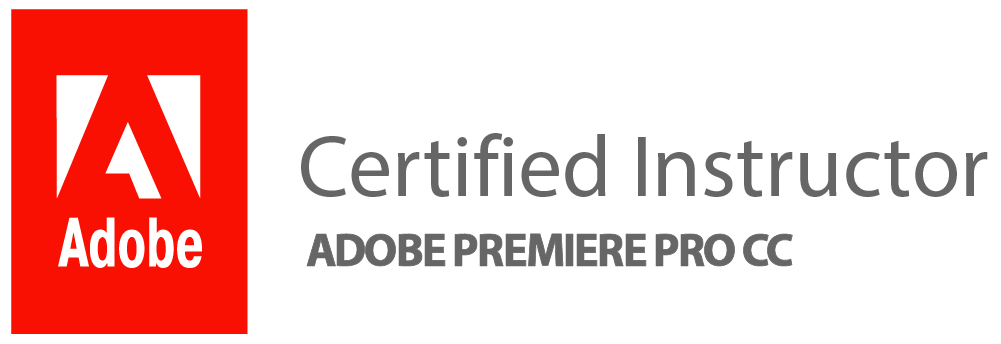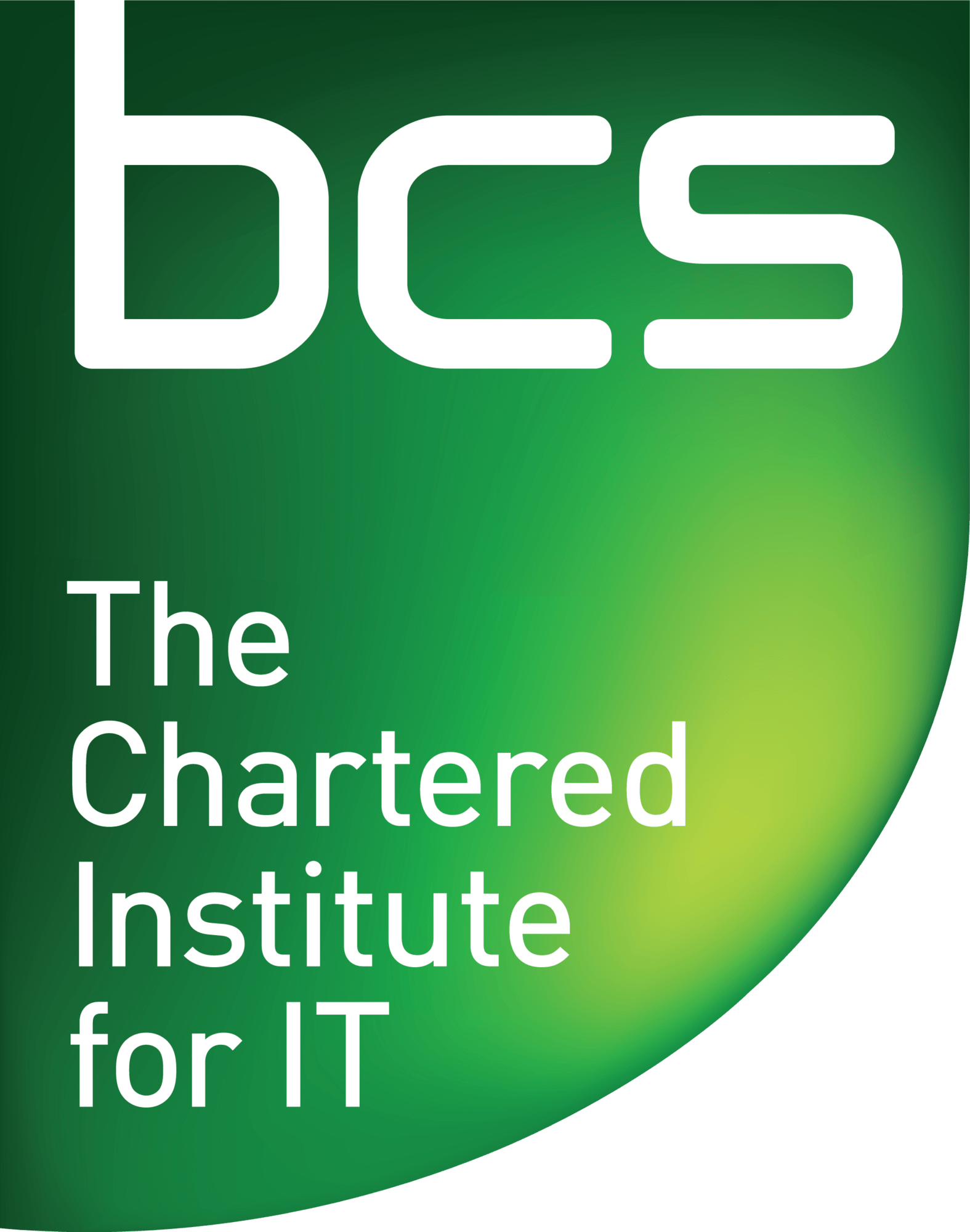What Do Digital Artist Do?
In a graphic design course, students learn a wide range of skills and techniques that are essential for becoming proficient in this field. The curriculum typically includes instruction in various design principles, such as colour theory, typography, layout composition, and visual hierarchy. Students also explore different software applications commonly used in the industry, including Adobe Photoshop, Illustrator, and InDesign.
Additionally, a graphic design course may cover topics related to branding and identity design. This involves creating logos and other visual elements that represent a company or organization’s unique identity and values. Students may also study packaging design, web design, motion graphics, and print production processes.
By studying these various aspects of graphic design, students gain the knowledge and skills necessary to create visually appealing designs that effectively communicate messages to target audiences. They develop an understanding of how to use imagery, typography, colour schemes, and layouts strategically to convey information or evoke certain emotions. Overall, a graphic design course equips students with the tools they need to enter the professional world as skilled designers capable of producing high-quality work across different mediums.
Typography:
Typography is a vital aspect of graphic design courses, as it focuses on the art and technique of arranging types in an appealing and readable manner. Students learn about different typefaces, their characteristics, and how to choose appropriate fonts for various design projects. They explore the principles of typography, such as hierarchy, contrast, alignment, and spacing, to effectively communicate a message through text.
In addition to understanding the technical aspects of typography, students also delve into the historical and cultural significance of typefaces. They study the evolution of letterforms throughout history and gain insights into how typography has influenced communication in different eras. This knowledge allows them to make informed decisions when selecting fonts that align with the intended message or evoke a particular mood.
Furthermore, graphic design courses often teach students about typographic grids and layouts. These tools help designers create harmonious compositions by establishing consistent proportions across various elements within a layout. By learning how to use grids effectively, students can achieve balance and visual harmony while organizing content in print or digital formats. Typography is thus an integral part of graphic design education that equips students with essential skills for creating visually pleasing and impactful designs.
Colour Theory:
Colour Theory is a crucial aspect of any graphic design course. In this subject, students learn about the principles and concepts behind colours, how they interact with each other, and how they can be effectively used in design. They explore the colour wheel and its different sections, such as primary, secondary, and tertiary colours. Students also delve into the psychological effects of colours on human perception and emotions.
Moreover, Colour Theory in a graphic design course involves understanding colour harmony and how to create visually pleasing compositions using various colour combinations. Students learn about complementary colours, analogous colours, triadic colours, and more. They study the importance of contrast in design to make elements stand out or create a visual hierarchy.
Overall, Colour Theory plays a significant role in graphic design education as it provides students with a solid foundation for creating aesthetically appealing designs that effectively communicate messages to their intended audience.
Layout and Composition:
Layout and composition are crucial elements in the field of graphic design. In a graphic design course, students will learn about the principles of layout and how to effectively arrange visual elements on a page or screen. They will understand the importance of creating balance, hierarchy, and unity in their designs to achieve a visually appealing result. Students will also explore different types of layouts, such as grid-based layouts or asymmetrical layouts, and when to use each one based on the project’s requirements.
Additionally, students will delve into composition techniques that help create engaging designs. They will learn about the rule of thirds, which involves dividing an image into nine equal parts using two horizontal lines and two vertical lines to guide placement for focal points. They will also study other composition techniques like leading lines, framing, and symmetry to enhance visual storytelling in their designs. Through practical exercises and projects, students can apply these principles and techniques to create well-structured and aesthetically pleasing designs that effectively communicate messages to their target audience.
Overall, studying layout and composition is essential for aspiring graphic designers as it provides them with the necessary skills to create visually compelling designs that grab attention while conveying information effectively. These principles not only enhance the aesthetic appeal of a design but also contribute significantly to its overall impact on viewers. By understanding layout principles and mastering various composition techniques, graphic design students can elevate their work from mere visuals to powerful communication tools that leave a lasting impression on audiences across different mediums – be it print or digital platforms.
Adobe Creative Suite:
When studying graphic design, one of the key tools that students learn to use is Adobe Creative Suite. This software package includes a range of programs that are essential for graphic designers, such as Photoshop, Illustrator, and InDesign.
Photoshop is a powerful image editing tool that allows designers to manipulate and enhance photos. It offers a wide range of features, from basic edits like cropping and resizing to more advanced techniques like retouching and colour correction. Illustrator, on the other hand, is used for creating vector graphics. This program allows designers to create scalable images with clean lines and sharp edges.
InDesign is another important program in the Adobe Creative Suite. It is used primarily for layout design and desktop publishing. With InDesign, designers can create multi-page documents such as brochures, magazines, or books with ease.
By learning how to use these programs effectively in a graphic design course, students gain valuable skills that will help them excel in their future careers as professional graphic designers.
Branding and Identity Design:
In a graphic design course, students will often study various aspects of branding and identity design. This includes understanding the importance of creating a strong brand image and how to communicate it effectively through visual elements. Students will learn about logo design, typography, colour theory, and other key elements that contribute to the overall brand identity.
Furthermore, students will delve into the process of developing a brand strategy by conducting market research, identifying target audiences, and analyzing competitors. They will also learn how to create style guides and brand guidelines that help maintain consistency across different marketing materials.
Additionally, students may explore case studies of successful brand campaigns to gain insights into effective branding strategies. They may also have the opportunity to work on real-world projects where they can apply their knowledge in designing logos and creating visual identities for clients. Overall, studying branding and identity design in a graphic design course equips students with the skills necessary to create impactful designs that accurately represent a company’s values and resonate with its target audience.
Graphic Designer
In a graphic design course, students can expect to study a wide range of topics that will equip them with the necessary skills and knowledge needed to succeed in this field. One of the key areas of focus is design principles and theory. This includes understanding concepts such as colour theory, typography, layout composition, and visual hierarchy. Students will learn how to effectively use these principles to create visually appealing designs that communicate effectively.
Another important aspect of a graphic design course is learning about various software programs used in the industry. Students will become proficient in using popular tools such as Adobe Photoshop, Illustrator, and InDesign. They will learn how to manipulate images, create vector graphics, and layout designs for print or digital media. Additionally, students may also explore other specialized software depending on their specific interests or career goals.
Moreover, a graphic design course often includes hands-on projects that allow students to apply what they have learned in real-world scenarios. These projects can range from creating logos and brand identities to designing marketing materials or websites. Through these practical assignments, students not only refine their technical skills but also develop their creativity and problem-solving abilities – both essential qualities for success in the field of graphic design.
Graphic Designer & Brand Designer
In a graphic design course, students study various aspects of visual communication and design principles. They learn about typography, colour theory, layout design, and composition. Through hands-on projects and assignments, they develop their skills in using software tools like Adobe Photoshop, Illustrator, and InDesign to create visual designs for both print and digital media.
Additionally, students also explore the role of graphic design in creating brand identities. They learn about the importance of creating a strong brand image that represents a company’s values and communicates effectively with its target audience. Brand designers are responsible for designing logos, packaging designs, and other brand elements that help establish a unique identity for businesses or organizations.
Overall, studying graphic design allows individuals to develop their artistic skills while also understanding the strategic aspects of effective visual communication and branding. It provides them with a solid foundation to pursue careers as graphic designers or brand designers in various industries such as advertising, marketing, publishing, or multimedia production.
Brand Designer & Illustrator
In a graphic design course, aspiring brand designers and illustrators learn the fundamental principles of visual communication. They delve into topics such as typography, colour theory, composition, and layout to understand how different elements work together to create effective designs. Students also explore the use of various design software and tools like Adobe Photoshop, Illustrator, and InDesign to develop their technical skills.
Moreover, students study the importance of research and conceptualization in the design process. They learn how to conduct thorough research on clients’ businesses or target audiences to gain insights that will inform their creative decisions. This includes understanding market trends, analyzing competitors’ branding strategies, and identifying unique selling points. With this knowledge, brand designers and illustrators can develop strong concepts that effectively communicate a client’s message while standing out from the competition.
Additionally, students are introduced to the world of illustration in graphic design courses. They learn different techniques for creating illustrations digitally or by hand using mediums like ink or watercolour. Illustration skills are valuable for brand designers as they can help bring a unique visual aesthetic to a brand’s identity or marketing materials. Students practice illustrating various subjects ranging from objects and animals to people and landscapes while experimenting with different styles that align with specific branding needs.
Overall, a graphic design course equips aspiring brand designers and illustrators with the necessary skills in both aesthetics and strategy needed to create impactful designs that resonate with target audiences while effectively communicating a client’s message.
What Are The Most Common Mistakes & How Can You Avoid Them When Working On A Graphic Design Project?
In a graphic design course, you study various aspects of the field that help you develop the skills and knowledge necessary for a successful career. The curriculum typically covers subjects like typography, colour theory, composition, layout design, branding and identity design, digital illustration, photo manipulation, web design principles, user interface (UI) and user experience (UX) design concepts.
Graphic design courses also emphasize the use of industry-standard software such as Adobe Photoshop, Illustrator, and InDesign to create professional designs. Additionally, students learn about the creative process behind developing visual solutions for clients or projects. They gain hands-on experience by working on real-world projects and building a portfolio that showcases their ability to solve visual communication problems effectively.
Moreover, graphic design courses often include lessons on understanding client briefs and requirements accurately to deliver designs that meet their objectives. Students are taught how to conduct research and gather inspiration before starting a project. They also learn important skills like time management, organization techniques for files and projects, and effective communication with clients or team members during the creative process.
Overall, studying graphic design provides students with a well-rounded education in both technical skills using relevant software tools as well as artistic principles essential for creating visually appealing designs across various mediums such as print materials or digital platforms.
What Will You Study At Our Graphic Design School?
In our graphic design school, you will have the opportunity to study a wide range of subjects that will equip you with the necessary skills and knowledge to succeed in this creative field. One of the core areas of study is visual communication, where you will learn about the principles and theories behind effective graphics and how to convey messages through various mediums. This includes understanding colour theory, typography, layout design, and composition.
Another key aspect of your studies at our graphic design school is learning how to use industry-standard software and tools. You will receive hands-on training in programs such as Adobe Photoshop, Illustrator, InDesign, and other digital design platforms. These skills are crucial for creating professional-quality designs and illustrations that meet client expectations.
Additionally, our curriculum emphasizes the importance of conceptual thinking and problem-solving in graphic design. You will be encouraged to think critically about design challenges and develop innovative solutions that effectively communicate ideas visually. Through projects and assignments, you will have the opportunity to apply the knowledge gained throughout your studies while honing your creativity and artistic abilities. Overall, our comprehensive graphic design program aims to provide you with a well-rounded education that prepares you for a successful career in this dynamic industry.
What Do Designers Need To Consider To Use Colour Successfully?
In a graphic design course, students learn about the fundamental principles of design, including the effective use of colour. Designers need to consider several factors when using colour successfully in their work. Firstly, they must understand colour theory and how different colours interact with one another. This includes knowledge of the colour wheel, complementary colours, analogous colours, and the psychological effects that different colours can have on an audience.
Secondly, designers need to consider the context and purpose of their design when choosing colours. The meaning and symbolism associated with certain colours can vary across cultures and industries. Therefore, it is crucial for designers to select colours that align with the intended message or brand identity they want to convey.
Lastly, designers should also take into account accessibility considerations when using colour in their designs. This includes ensuring sufficient contrast between text and background colours for readability purposes and considering how individuals with visual impairments may perceive the design.
Overall, by understanding colour theory, considering context and purpose, as well as addressing accessibility concerns, designers can effectively utilize colour in their work to create visually appealing and impactful designs.
Digital Artist
In a graphic design course, digital artists typically learn a wide range of skills and techniques that are essential for creating visually appealing and professional designs. One fundamental aspect that is covered in these courses is the study of colour theory and its application to design. Digital artists learn about various colour schemes, how colours interact with each other, and how to effectively use colour to evoke different emotions or create specific atmospheres in their designs.
Another key component of a graphic design course for digital artists is the study of typography. Students are taught about different types of fonts, their characteristics, and how to use them appropriately in various design projects. They also learn about layout principles and how to effectively arrange text elements along with visual elements on a page or screen.
Moreover, digital artists studying graphic design also delve into the world of image manipulation and editing. They learn how to use industry-standard software such as Adobe Photoshop to modify images, remove imperfections, enhance colours or details, and create stunning visual effects. These skills are crucial for creating high-quality graphics or illustrations that meet client requirements or communicate a specific message effectively.
How Do Graphic Designers Select The Right Colours For A Project?
In a graphic design course, students learn various techniques and principles for creating visually appealing designs. One of the important aspects covered in these courses is colour theory. Students are taught how to understand and apply different colour schemes, such as complementary, analogous, or triadic colours, to effectively convey the desired message in their designs.
Additionally, students also learn about the psychology of colours and how different colours evoke specific emotions or reactions from viewers. This knowledge helps graphic designers select the right colours for a project based on its intended purpose and target audience. They consider factors like cultural associations with certain colours, brand identity guidelines, and trends in design to ensure that their colour choices align with the overall vision and objectives of the project.
Furthermore, graphic design courses often include practical exercises where students work on real-world projects or case studies. These assignments allow them to apply their understanding of colour theory by selecting appropriate colour palettes that enhance the visual hierarchy, readability, and overall aesthetics of their designs. Through critique sessions and feedback from instructors or peers, students refine their skills in choosing the right colours that effectively communicate messages through visuals.
How Do Colour Schemes Affect Branding And Identity Design?
In a graphic design course, students learn various aspects of design principles and techniques. One crucial area that is covered extensively is branding and identity design. This involves understanding how to create a visual identity for a brand or company through the use of colours, typography, logos, and other visual elements.
A significant component of this process is understanding how colour schemes can affect branding and identity design. Different colours evoke specific emotions and associations in people’s minds. For example, warm tones like red and orange are often associated with energy and excitement, while cooler tones like blue and green may convey calmness or trustworthiness.
By selecting the right colour scheme for a brand or company, designers can effectively communicate its values, personality, and message to the target audience. The choice of colours can influence how customers perceive a brand; it can attract attention, elicit certain emotions or even create subconscious associations with existing brands in the market.
Overall, studying colour schemes as part of graphic design education helps students develop an understanding of how visuals impact perception. It enables them to make informed decisions when creating branding materials that align with a client’s goals and objectives. Through experimentation with different colour combinations during their studies, aspiring designers gain valuable insights into creating powerful visual identities that leave a lasting impression on consumers.
Graphic Design And The Connection To The World Of Advertising
In a graphic design course, students study various aspects of the field that are relevant to advertising. They learn about the principles of design and how to effectively communicate through visual elements such as colour, typography, and composition. Understanding the psychology behind design choices is crucial in creating impactful advertisements that resonate with target audiences.
Additionally, students delve into the technical skills required for designing advertisements. They learn how to use industry-standard software like Adobe Photoshop, Illustrator, and InDesign to create visually appealing graphics and layouts. These tools enable them to bring their creative ideas to life and produce professional-level designs for advertising campaigns.
Furthermore, a graphic design course emphasizes the importance of staying up-to-date with current trends in advertising. Students are encouraged to research successful ad campaigns from around the world and analyze their visual strategies. By studying real-world examples, they gain insights into effective techniques used by professionals in the industry and can apply these principles when creating their own advertisements.
Overall, a graphic design course provides students with a solid foundation in both artistic creativity and technical proficiency necessary for excelling in the world of advertising. It equips them with the knowledge and skills needed to create visually captivating designs that can effectively promote products or services on various platforms such as print media, digital marketing channels, or social media platforms.
Printing And Graphic Design
In a graphic design course, students study various aspects of the field that are essential for becoming successful in the industry. One key area of focus is learning how to use design software effectively. Students are taught how to navigate popular programs such as Adobe Photoshop, Illustrator, and InDesign, mastering the tools and functions necessary for creating visually appealing designs.
Another important aspect of a graphic design course is understanding the principles of effective visual communication. Students learn about colour theory, typography, layout composition, and other design elements that contribute to conveying messages clearly and engagingly. They also delve into the psychology behind visual perception and how it influences the way people respond to different designs.
Additionally, students in graphic design courses often explore printing techniques and processes. They learn about different types of printing methods, such as offset printing, digital printing, screen printing, and more. Understanding these techniques enables them to optimize their designs for print production while considering factors like colour accuracy, resolution requirements, paper selection, and finishing options such as coatings or embossing.
What Is The Difference Between Graphic And Digital Design?
In a graphic design course, students learn the fundamentals of visual communication and how to create effective designs using various tools and techniques. They study typography, colour theory, layout design, and image manipulation in order to develop a strong understanding of design principles. Additionally, they gain proficiency in industry-standard software such as Adobe Photoshop, Illustrator, and InDesign.
Moreover, students also explore the different aspects of branding and logo design. They learn how to create unique and memorable identities that effectively represent a company or product. Additionally, they delve into the world of print design by studying packaging design, magazine layouts, and poster creation.
Furthermore, students are introduced to web design concepts such as user experience (UX) and user interface (UI) design. They learn how to create visually appealing websites that are easy to navigate and engage users effectively. They also study responsive web design techniques to ensure their designs adapt well across different devices.
Overall, a graphic design course provides students with a comprehensive foundation in both traditional print-based graphic design as well as digital design for web platforms.
Design Thinking & Graphic Design Rules
In a graphic design course, one of the key topics that students often study is design thinking. Design thinking is a problem-solving approach that focuses on developing innovative solutions through empathy, experimentation, and iteration. By applying this mindset to their work, graphic design students learn how to better understand the needs and preferences of their target audience and create designs that effectively communicate messages and achieve desired outcomes.
Another important aspect of studying graphic design is learning the rules and principles of graphic design. These rules serve as guidelines for creating visually appealing and effective designs. Students are introduced to concepts such as colour theory, typography, composition, balance, hierarchy, and contrast. By understanding these fundamental principles, graphic design students can make informed decisions in their designs and ensure that they adhere to industry standards while still maintaining creativity.
Overall, studying graphic design involves not only developing technical skills but also cultivating a creative mindset with an emphasis on problem-solving and understanding the principles behind successful visual communication. Through learning about design thinking and following the established rules of graphic design, students gain a solid foundation that enables them to create impactful designs that resonate with their intended audience.
Visual Language & Concept
In a graphic design course, one of the key subtopics that students study is visual language and concept. Visual language refers to the way in which visuals are used to communicate ideas, emotions, or messages. It involves understanding the elements of design, such as colour, shape, line, typography, and composition. Students learn how to use these elements effectively to create visually appealing and impactful designs.
Concept development is another important aspect of studying visual language in graphic design. It involves generating and refining ideas for a design project based on research and analysis. Students learn how to translate their conceptual ideas into visual representations that effectively communicate their intended message. They explore different techniques for brainstorming concepts, sketching out ideas, and refining them through iterations.
Through studying visual language and concepts in a graphic design course, students gain a deeper understanding of how visuals can convey meaning and influence perception. This knowledge allows them to create designs that not only look aesthetically pleasing but also effectively communicate the desired message or evoke specific emotions from the audience.
Composition, Hierarchy, Colour Theory, Ideas
In a graphic design course, students delve into the fundamental principles of composition, which involves arranging visual elements in a way that is visually appealing and effectively communicates a message. They learn about the rule of thirds, balance, symmetry, and other techniques that help create visually balanced and engaging designs.
Hierarchy is another crucial aspect taught in graphic design courses. Students understand how to prioritize information and create a clear visual hierarchy that guides the viewer’s eye through the design. This includes learning about typography hierarchy, size relationships, colour contrast, and other factors that influence how information is perceived.
Colour theory plays an integral role in graphic design education as well. Students study the psychology behind colours and understand their impact on human emotions and perceptions. They learn about colour harmonies, such as complementary or analogous colours, and how to use them effectively in their designs to evoke certain moods or create visual interest.
Lastly, generating ideas is a key focus of a graphic design course. Students are encouraged to explore various creative processes for brainstorming and problem-solving. They learn techniques like mind mapping, sketching thumbnails, creating mood boards, conducting research for inspiration, and refining their concepts through feedback and iteration. The goal is to develop strong ideation skills that can lead to innovative and effective design solutions.
Thinking Outside The Box
In a graphic design course, students are often encouraged to think outside the box. This means going beyond traditional design techniques and exploring innovative and unconventional ideas. This mindset allows for more creative and unique solutions to design problems. Students learn how to push boundaries, challenge norms, and break the rules of traditional design.
Thinking outside the box in graphic design involves experimenting with different styles, layouts, colours, and typography. Students are taught to explore various tools and software to create eye-catching visuals that communicate effectively with their target audience. They are encouraged to take risks and step out of their comfort zone in order to create original designs that stand out from the crowd.
Additionally, thinking outside the box also involves considering alternative perspectives and approaches when working on projects. It requires students to think critically about their designs and constantly seek new inspiration from various sources such as art movements, nature, culture, or technology. By embracing this mindset in a graphic design course, students can develop their own unique style while also staying ahead of current trends in the industry.
How Does Good Design Affect Customer Conversion Rates?
In a graphic design course, students learn various aspects and techniques of visual communication. They study elements such as colour theory, typography, layout composition, and image manipulation. Additionally, they gain proficiency in using design software tools like Adobe Photoshop, Illustrator, and InDesign.
Students also explore the history and evolution of graphic design to understand the principles that underpin effective visual communication. They learn about different styles and movements in design to broaden their aesthetic sense and creative thinking. Moreover, students develop skills in conceptualization and problem-solving through projects that require them to apply design principles to real-world scenarios.
Furthermore, a graphic design course equips students with critical skills related to branding and marketing. They learn how to create visually appealing logos and brand identities that effectively communicate a company’s values and message. Students also delve into user interface (UI) and user experience (UX) design concepts to craft intuitive digital interfaces that enhance usability.
Overall, a graphic design course provides students with a comprehensive understanding of the principles of good design while nurturing their artistic abilities, technical skills, creativity, and critical thinking – all essential for successful careers in the field of graphic design.
How Important Is It To Have A User-Friendly Interface When Designing A Website?
In a graphic design course, students learn about various aspects of designing a website, including the importance of creating a user-friendly interface. A user-friendly interface is crucial in web design as it directly impacts the overall user experience and satisfaction. It involves creating intuitive navigation, clear and concise content layouts, easy-to-use menus, and interactive elements that enhance engagement.
A user-friendly interface ensures that visitors can easily navigate through the website, find information seamlessly, and perform desired actions effortlessly. It plays a significant role in retaining users on the site and encouraging their return visits. Additionally, an intuitive interface reduces frustration and confusion for users, enhancing their overall perception of the brand or organization behind the website.
During a graphic design course, students also learn about usability testing methods to evaluate how well an interface meets users’ needs. This includes conducting surveys or interviews with potential users to gather feedback on their experience while using the website. By understanding these principles and techniques, designers can create visually appealing websites with interfaces that prioritize ease of use and optimize user satisfaction.
UX UI (User Experience & User Interface)
In a graphic design course, students can expect to study various aspects of UX UI (User Experience & User Interface) design. This includes understanding the principles and techniques behind creating visually appealing and user-friendly interfaces for websites, mobile apps, and other digital platforms. Students will learn about the importance of wireframing and prototyping in the design process, as well as how to conduct user research and testing to ensure that their designs meet the needs and expectations of users.
Furthermore, students will delve into the psychology behind user behaviour and learn how to apply this knowledge to create intuitive navigation systems and engaging visual experiences. They will explore different design tools such as Adobe XD or Sketch to mockup their designs and bring them to life through interactive prototypes. Additionally, students may also be introduced to coding languages like HTML/CSS or JavaScript in order to implement their designs on actual websites or apps.
Overall, studying UX UI design in a graphic design course provides students with a solid foundation in designing visually appealing interfaces that prioritize user experience while considering factors such as accessibility, usability, and functionality.
Adobe Photoshop & Adobe Illustrator & Adobe Indesign
In a graphic design course, students can expect to study various software programs that are essential for the field. Three of the most important software programs that are typically covered in a graphic design course are Adobe Photoshop, Adobe Illustrator, and Adobe InDesign.
Adobe Photoshop is a powerful image editing program that allows designers to manipulate and enhance photographs and create stunning visual effects. Students will learn how to use Photoshop tools such as layers, filters, and masks to edit images and create composite designs.
Adobe Illustrator is a vector-based graphics editor used for creating illustrations, logos, icons, typography, and other scalable designs. In a graphic design course, students will learn how to use Illustrator’s drawing tools, shape builder tools, pen tools, and other features to create precise and high-quality vector artwork.
Adobe InDesign is desktop publishing software used for creating layouts for print or digital publishing. Students will learn how to use InDesign’s layout tools, such as master pages, grids, stylesheets, and interactive elements, to create professional-looking documents like brochures, magazines, ebooks or websites.
Understanding these three essential software programs – Adobe Photoshop for image editing, Adobe Illustrator for vector-based art creation, and Adobe InDesign for layout design – is crucial in mastering the fundamentals of graphic design. These skills empower designers with the ability to bring their creative visions into reality across different mediums, such as print media or web design.
Build Websites: Figma, WordPress, Elementor.
In a graphic design course, students typically learn various skills and techniques related to visual communication. One of the key areas of focus is understanding and using design principles such as colour theory, typography, layout, and composition. These principles help students create visually appealing designs that effectively communicate messages to their intended audience.
Additionally, students also learn how to use industry-standard design software such as Adobe Photoshop, Illustrator, and InDesign. They gain proficiency in manipulating images, creating vector graphics, and designing print materials like brochures or posters.
Furthermore, a graphic design course often includes modules on web design. Students are introduced to tools like Figma, which allow them to create interactive prototypes for websites or mobile apps. They also learn how to build websites using content management systems like WordPress with the help of page builders like Elementor that provide drag-and-drop functionality for easy customization.
Overall, a graphic design course equips students with both theoretical knowledge and practical skills necessary for creating visually captivating designs across various mediums, including print and digital platforms.
High Demand
High Demand: The field of graphic design is experiencing high demand in today’s digital age. With the rise of social media platforms, websites, and online marketing campaigns, businesses are constantly seeking talented graphic designers to help them stand out from their competitors. Graphic designers are responsible for creating visually appealing designs that effectively communicate a message or brand identity. They use various tools and software to create logos, advertisements, brochures, and other promotional materials.
In addition to traditional print media designs, graphic designers also need to be proficient in creating digital designs for websites and mobile applications. This includes enhancing the user experience through intuitive layouts and user-friendly interfaces. As technology continues to advance at a rapid pace, the demand for skilled graphic designers who can adapt to new trends and technologies is only increasing.
Furthermore, with globalization allowing businesses to reach customers all around the world, there is a growing need for multilingual graphic designers who can create designs that cater to diverse cultures and languages. Being able to understand cultural nuances and incorporate them into the design process is crucial in creating impactful visuals that resonate with different target audiences.
Overall, due to technological advancements and an increasingly globalized marketplace, the demand for graphic designers remains high as businesses recognize the importance of strong visual communication in capturing consumer attention and building brand recognition.
Multimedia & Interactive Media
In a graphic design course, students will often study multimedia and interactive media as part of their curriculum. This subtopic focuses on the use of various forms of media, such as audio, video, and animation, to create engaging and interactive experiences for users. Students will learn how to incorporate these elements into their designs in order to enhance user engagement and create visually appealing content.
One aspect that is commonly covered in this subtopic is the use of audio in graphic design. Students will explore different techniques for incorporating sound effects, voiceovers, and music into their designs to evoke certain emotions or set a specific tone. They will also learn about the technical aspects of working with audio files, such as editing and syncing them with visual elements.
Another important area within multimedia and interactive media is video production. In this subtopic, students will gain knowledge on how to shoot, edit, and integrate videos into their designs effectively. They will learn about different camera angles and movements that can be used to enhance storytelling or convey a specific message. Additionally, they may also study techniques for adding special effects or motion graphics to videos using software tools like Adobe After Effects.
Overall, studying multimedia and interactive media in a graphic design course provides students with valuable skills that allow them to create dynamic and engaging designs across various mediums.
Motion Graphics & After Effects
One of the key components of a graphic design course is motion graphics, which involves the creation and manipulation of moving images. This subtopic explores how motion graphics can be achieved using software such as Adobe After Effects. Students will learn various techniques to animate text, graphics, and illustrations to bring them to life. They will also gain an understanding of how motion can enhance storytelling and effectively communicate messages.
In addition to learning the technical skills required for motion graphics, students will also explore the principles of animation, such as timing, spacing, and easing. These principles are crucial in creating smooth and visually appealing animations that capture the viewer’s attention. Through hands-on projects and assignments, students will have the opportunity to apply these principles in their own work.
By studying motion graphics in a graphic design course, students will not only develop essential technical skills but also gain a deeper understanding of visual communication. They will learn how different elements like colour, typography, composition, and movement come together to create impactful designs that engage audiences. Overall, this subtopic provides a comprehensive overview of how motion graphics can be used as a powerful tool in graphic design practice.
Digital Illustrations
In a graphic design course, one of the key areas of study is digital illustrations. Digital illustrations are an essential part of contemporary graphic design as they allow designers to create visually appealing and engaging artwork using digital tools and techniques. Students in a graphic design course learn how to use various software programs such as Adobe Illustrator or Procreate to develop their skills in creating digital illustrations.
During the course, students are taught the fundamentals of creating digital illustrations, including understanding colour theory, composition, and visual storytelling. They learn how to manipulate shapes, lines, and textures to bring their ideas to life on screen. Additionally, students explore different styles and techniques used in digital illustration, such as vector graphics or raster-based drawings.
Through hands-on projects and assignments, students gain practical experience in creating various types of digital illustrations for different purposes like advertisements, editorial layouts, or social media content. The course also focuses on teaching students about copyright laws and ethical considerations when working with digital images. Overall, studying digital illustrations equips aspiring graphic designers with the necessary skills and knowledge needed to succeed in the field by allowing them to create impactful visuals that can effectively communicate messages across various media platforms.
Why Is A Graphic Designer Portfolio Important?
In a graphic design course, students study a wide range of topics that are essential for building a strong foundation in the field. They learn about design principles, typography, colour theory, layout techniques, and digital software skills. Students also explore various aspects of visual communication and problem-solving through projects that involve creating logos, brochures, posters, websites, and other forms of graphic design.
Furthermore, graphic design courses often emphasize the importance of understanding client needs and effectively communicating ideas visually. Students are taught how to conduct research and gather inspiration to develop creative concepts that align with the objectives of a project. They also learn about presentation skills to effectively showcase their thought process and final designs.
Overall, studying graphic design equips individuals with the necessary knowledge and skills to create visually appealing designs while considering factors such as aesthetics, functionality, user experience, branding guidelines, and target audience preferences.
Visual Language & Branding
In a graphic design course, students learn about visual language and branding as essential aspects of their education. Visual language refers to the use of visual elements such as colour, typography, and imagery to convey a message or evoke emotions. It involves understanding how different design choices can influence the way people perceive and interpret visual communication.
Branding, on the other hand, focuses on creating a distinct identity for a company or product through consistent visuals and messaging. Students study how to develop brand strategies that reflect the values and personality of a business while resonating with its target audience. They explore techniques for designing logos, packaging, websites, advertisements, and other marketing materials that effectively communicate brand messages.
Through hands-on projects and real-world examples, students gain practical experience in applying visual language principles to create compelling designs that align with branding objectives. They learn how to use industry-standard software tools like Adobe Photoshop and Illustrator to bring their ideas to life. Ultimately, studying visual language and branding equips graphic design students with the skills needed to create visually impactful designs that effectively communicate messages and build strong brands.
Graphic Design For Business
In a graphic design course, students will study various aspects of the field to develop their skills and knowledge. They will learn about the principles of design, such as colour theory, typography, composition, and layout. Students will also explore different software tools used in graphic design, such as Adobe Photoshop, Illustrator, and InDesign.
Additionally, they will be introduced to the concept of branding and how graphic design plays a crucial role in creating a strong brand identity for businesses. This includes understanding how to create logos that effectively communicate a company’s values and message. Students may also study marketing and advertising concepts to understand how graphic design is utilized in these fields.
Throughout the course, students will engage in hands-on projects where they can apply what they have learned. These projects could include designing websites, creating advertisements or promotional materials like brochures or posters. By the end of the course, students should have gained a solid foundation in graphic design principles and practical skills that can be applied to real-world business scenarios.
Visual Language For Social Media
In a graphic design course, one of the key areas of study is visual language for social media. This involves understanding how to effectively communicate messages and ideas through images, graphics, and videos on various social media platforms. Students learn about different elements of visual communication, such as colour theory, typography, composition, and branding.
By studying the visual language for social media, students gain insights into creating eye-catching visuals that can capture the attention of audiences in a crowded digital landscape. They learn how to use colours strategically to evoke specific emotions or create a cohesive brand identity. Typography lessons teach them about choosing fonts that are easy to read on screens and convey the right tone for the content being shared.
Additionally, students explore composition techniques that help them arrange elements in visually appealing ways while maintaining balance and hierarchy. They also delve into branding principles to understand how to design consistent visuals that align with a company’s identity across different social media channels. Through this subtopic, graphic design courses equip students with the skills needed to create compelling visuals tailored for effective communication on social media platforms.
Design Apps And Websites
In a graphic design course, students study various aspects of design, including typography, colour theory, layout design, branding and identity design, user experience (UX) design, and web design. Typography is the art of arranging text in a visually appealing manner and understanding different typefaces and their appropriate usage. Colour theory helps designers understand how colours interact with each other and how they can be used to evoke certain emotions or communicate specific messages.
Layout design focuses on arranging elements on a page or screen in an organized and aesthetically pleasing way. Students learn about grid systems, composition principles, and effective use of white space. Branding and identity design involves creating visual representations that communicate the values, personality, and overall image of a company or organization.
User experience (UX) design is concerned with enhancing the usability and accessibility of websites or apps to provide users with an enjoyable interaction. This includes understanding user behaviour through research techniques like personas and user testing, as well as wireframing and prototyping interfaces. Web design specifically covers the creation of websites by utilizing coding languages such as HTML, CSS, and JavaScript, along with knowledge of responsive design for optimal viewing on multiple devices.
Visual Communication UI UX
In a graphic design course, students learn various aspects of visual communication, including user interface (UI) and user experience (UX) design. UI refers to the visual elements of a digital product or website, such as buttons, icons, and typography. It involves creating an aesthetically pleasing and functional interface that is easy for users to navigate. Students study principles of layout design, colour theory, typography, and iconography to create visually appealing UI designs.
On the other hand, UX focuses on the overall experience that users have while interacting with a product or website. It includes understanding users’ needs and goals and designing interfaces that meet those requirements effectively. Students in a graphic design course learn about user research techniques like interviews and surveys to gather insights about target audiences. They also delve into information architecture and interaction design to create intuitive navigation systems that enhance the usability of digital products.
Overall, studying UI/UX in a graphic design course equips students with the skills needed to create engaging visuals that not only look great but also provide seamless experiences for users when interacting with digital products or websites. Understanding how visual elements impact usability is crucial in today’s digital landscape, where aesthetics play a significant role in attracting and retaining users’ attention.
Visual Communication Vs Graphic Design
In a graphic design course, students will study various aspects of visual communication. Visual communication is the practice of conveying ideas and information through imagery, symbols, and typography. It involves using visual elements to communicate a message effectively and efficiently. This includes understanding principles of design such as colour theory, composition, typography, and layout.
Graphic design, on the other hand, is a specific subset of visual communication. It focuses on creating visually appealing designs for various mediums, such as print or digital media. Students in a graphic design course will learn how to use software tools like Adobe Photoshop or Illustrator to create logos, posters, advertisements, websites, and more.
While both visual communication and graphic design are closely related fields that involve creating visuals to convey messages effectively, there are some differences between the two. Visual communication is a broader field that encompasses all forms of visual expression, while graphic design specifically deals with creating designs for commercial or promotional purposes. In short, graphic design can be seen as a specialized discipline within the larger field of visual communication.
Application Building Vs Graphic Design
In a graphic design course, students learn various skills and techniques related to visual communication. They are taught how to create visually appealing designs using elements such as typography, colour theory, and layout principles. Students also study the history of design and analyze different styles and trends.
Additionally, graphic design courses often cover software tools used in the industry, such as Adobe Photoshop, Illustrator, and InDesign. Students receive hands-on training on these applications to develop their technical skills in digital design.
While application building is not typically covered extensively in a graphic design course, it can be an essential skill for designers who want to create interactive or user-friendly designs. Application building involves coding and programming skills that enable designers to bring their visual designs to life through functional websites or mobile apps. Understanding application building can enhance a designer’s ability to prototype designs effectively and collaborate with developers during the implementation phase.
However, it is important to note that while some designers may have expertise in both graphic design and application building, many professionals specialize exclusively in one area or the other. Ultimately, whether one focuses on application building or graphic design depends on personal interests and career goals within the broader field of visual communication.
Graphic Design & Marketing
In a graphic design course, students will delve into various aspects of the field, allowing them to develop a strong foundation in both technical skills and creative thinking. They will learn about the principles and elements of design, such as composition, colour theory, typography, and layout. Through hands-on projects and assignments, students will gain proficiency in using industry-standard software like Adobe Photoshop, Illustrator, and InDesign.
Additionally, a graphic design course will also cover topics related to marketing. Students will explore how graphic design plays a crucial role in effectively communicating messages to target audiences. They will study branding strategies and visual identity development for companies or organizations. This includes creating logos that capture the essence of a brand and designing marketing materials like brochures, flyers, social media graphics, and website layouts that convey the desired message.
Overall, studying graphic design provides aspiring designers with the necessary tools to create visually appealing designs while understanding how they can be utilized as powerful marketing assets. By combining their artistic abilities with an understanding of marketing principles, graduates can confidently navigate the world of graphic design & marketing to help businesses reach their target audience effectively.
Options For Working From Home In Graphic Design
In a graphic design course, students can expect to study various aspects of the field that will equip them with the necessary skills and knowledge to excel in their careers. The curriculum typically includes subjects like typography, colour theory, layout design, digital imaging, branding and logo design, illustration techniques, and web design principles. Students also learn how to use industry-standard software such as Adobe Photoshop, Illustrator, and InDesign.
Additionally, graphic design courses often emphasize the importance of understanding client needs and effectively communicating ideas through visual mediums. This involves learning about market research and target audience analysis to create designs that resonate with specific demographics. Students may also explore topics related to print production processes, advertising strategies, project management techniques, and portfolio development.
Overall, a graphic design course provides aspiring designers with a well-rounded education that combines technical skills with creative thinking. It equips them with the ability to visually communicate messages effectively while staying up-to-date with current trends in the industry.











